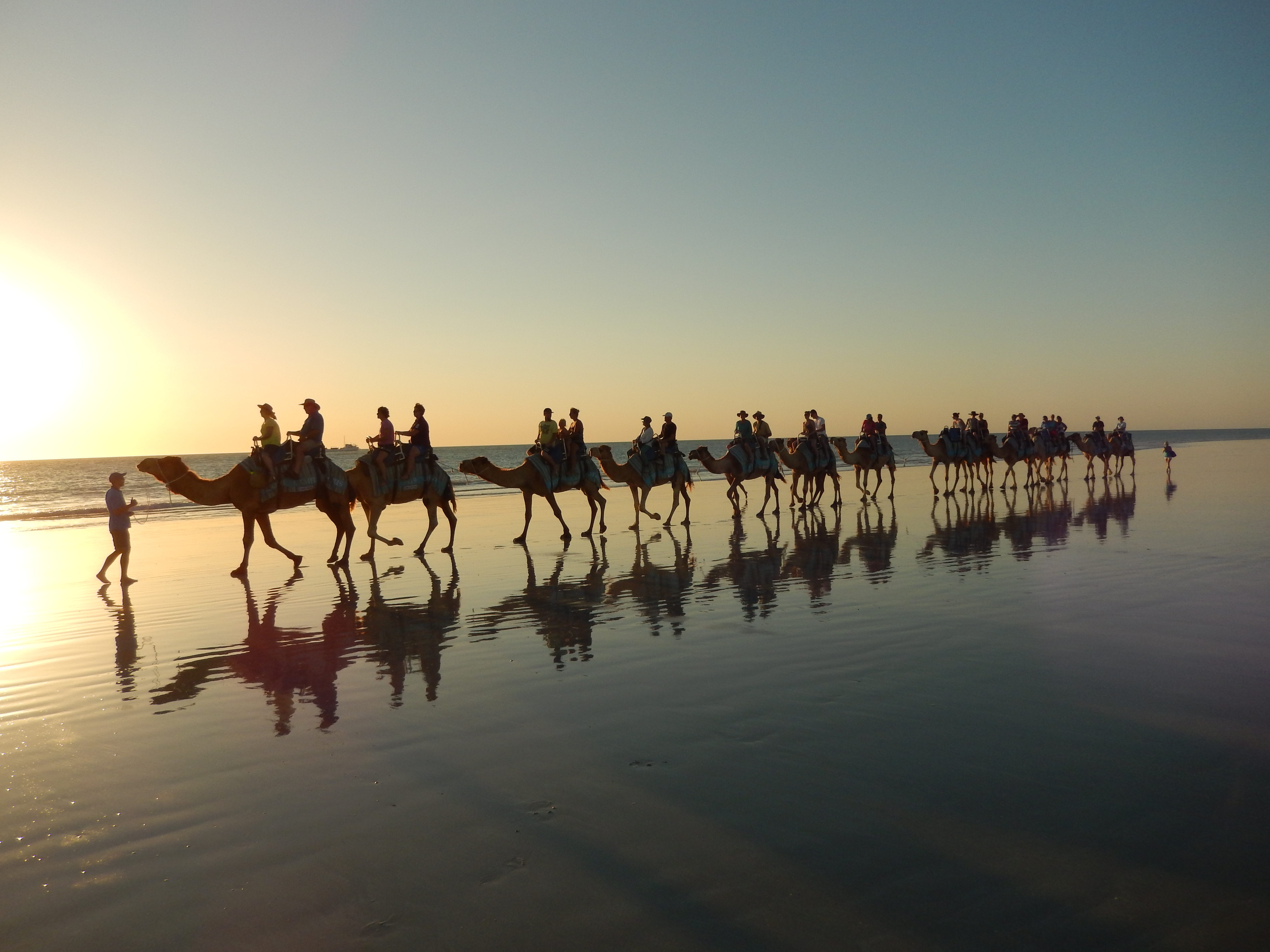Beaches at last
We’ve enjoyed huge servings of wide rivers, flat savannah woodland, huge cliffs, high waterfalls, refreshing plunge pools, beautiful boabs, snapping crocodiles and long dusty red roads on this trip. But one feature of Australia that we’ve missed is beaches. Australia is justifiably famous for its beaches but we’ve only dabbled in them on this trip. Until now, that is. Because our arrival in Derby on the northern coast of Western Australia meant that for the next few weeks we would be visiting some of the most beautiful beaches in Australia as we travelled down the coast. And we were ready for them.
First stop was Broome, known for its history of pearling and its long beautiful beaches. Broome today has about 15,000 full time residents but that number can triple in the busy tourist season when people come from all around to enjoy the surrounding attractions and in particular its beach life. The town’s biggest draw card is Cable Beach which stretches for as far as you can see in both directions and features beautiful sunsets and a dramatic ten metre rise and fall in the tides.
We used our time in Broome to chill out a bit, stayed in a fantastic self-contained unit, did a mountain of washing, replaced one of our damaged tyres and had drinks at the Sunset Bar while watching the glowing red sun sink over the Indian Ocean. Broome has a lay-back, slightly touristy feel to it with it’s pearling history, Chinatown and beach culture but without anything done to excess. The place was a very appealing stop after many nights camping in the bush.
One of the ‘must do’ activities for all visitors in Broome is riding camels on the beach at sunset. And of course we did it! Camels are such an odd creature, taller than you expect, long eyelashes and an ugly grunt, ungainly to stand up from the sand after you climb on and with an uneven bumpy gait. It’s a very touristy thing to do but we loved the ride along the beach in a traditional camel train where one camel is tied to another and the beautiful sun set on schedule.
Broome sits at the base of the large Dampier Peninsula that struts out into the ocean and forms a large northern extension to the mainland. The peninsula is primarily Aboriginal land but visitors have access to all parts with the right permits. We travelled on a dirt track up the western coast to a beautiful little bush camp on the beach which we named Red Cliffs for the long majestic dark orangey red cliffs that lined the faultless beaches. We strolled the beach that night, probably the only ones within ten kilometres or so, and loved every bit of it. Another perfect ten campsite.
We drove further north the next day on some cruel sandy and corrugated tracks to the tip of the peninsula at Cape Leveque. Along the way we stopped at an Aboriginal community called Beagle Bay (but confusingly, not on the coast) where missionaries built a fabulous church featuring inlaid mother of pearl shells on the alter over 100 years ago.
We drove further north to the tip of the peninsula and visited One Arm Point, an Aboriginal community which charged us $20 to explore their beaches and quiet little community. We enjoyed watching the tide rush past the point as if the ocean was a fast moving river but couldn’t help but wonder what these kids do after they complete their English language education in these remote local schools. Will they stay in the community like their parents and live a quiet motionless life or will they venture down to Broome or another town for employment and a different life? Which path is right for them and which one is better?
We returned to nearby Cape Leveque, drove down onto the beach and swam in almost perfect crystal clear water and soft silky sand until sunset and then returned to our camp for a great finish to a day that had a little bit of everything.
The next day we headed south again on the long red track off the peninsula and steered ourselves down the coastline, skirting the Great Sandy Desert which spread out for a thousand kilometres to our east. We camped that night on 80 Mile Beach, a thin strip of land that separated the desert from the ocean. To appreciate this long beautiful strip of sand we drove in both directions on the each, and enjoyed another mesmerising sunset across the water.
The Dampier Peninsula proved to be just the antidote for our many long weeks travelling on inland roads without any beaches and we enjoyed the relaxed feeling that comes with any time spent on the sand. We’ll be visiting more beaches further south but they’ll have to jump over a high bar after Cable Beach, Red Cliffs and Cape Leveque.











